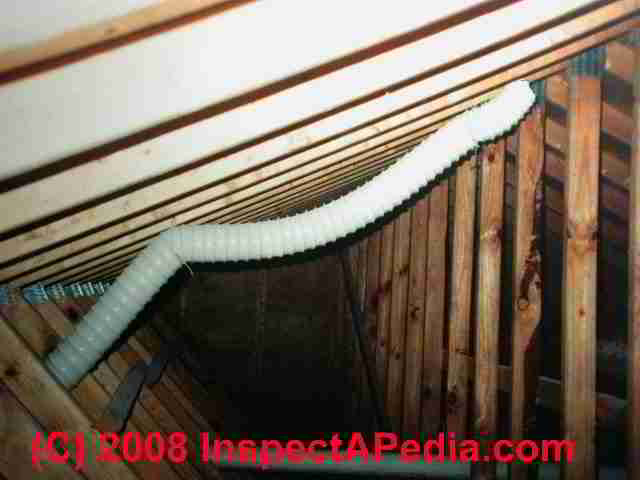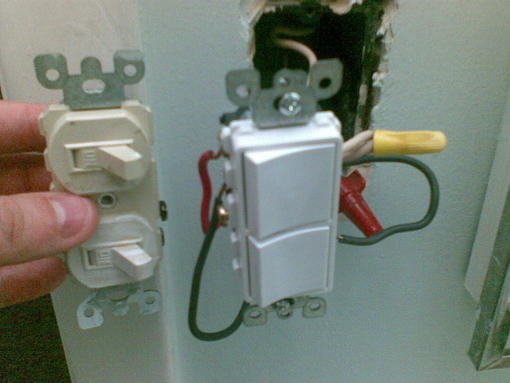Today’s topic is How To Clean Bathroom Vent Fan With Light. Obviously, you can find a great deal of The Dos and Don’ts of Bathroom Ventilation-related content online. The proliferation of online platforms has streamlined our access to information.
There is a connection between the How To Clean Bathroom Vent Duct and The Dos and Don’ts of Bathroom Ventilation information. additional searching needs to be done for The Dos and Don’ts of Bathroom Ventilation, which will also be related to How To Clean Nutone Bathroom Exhaust Fan With Light.

11 Facts How To Clean Bathroom Vent Fan With Light | How To Clean Bathroom Exhaust Fan Without Removing
- Let the bathroom vent fan run throughout your bath or shower and, just as importantly, leave it on for at least 15 minutes after you’re finished to fully air out the space. Turning the fan off right after your shower or bath doesn’t give the device enough time to vent all the shower steam. If your mornings are very hectic, consider installing a bathroom vent fan with an automatic humidity sensor; these units detect when humidity levels are too high in and switch the fan on and off as needed. - Source: Internet
- Although most bathroom vent fans are quite simple, some have bells and whistles, such as motion sensors that switch the device on when you enter the bathroom and turn it off once you leave. Some units even have a heat exchange function, which uses the vented warm air to heat up incoming cooler air, thus preventing the fan from sucking out your home’s warmth during the winter months. You’ll also find fan/light fixtures with decorative globes and finishes that add a bit of style. - Source: Internet
- Typical building regulations call for a full air exchange—a measurement of the air movement out of a space divided by the square footage of that space—five times per hour, but most contractors and building experts feel that’s actually a bit low, and recommend you choose a fan that provides at least eight full air exchanges per hour. No need to bother with a calculator and mathematical equations, however; you’ll generally get close to that goal by choosing a bathroom fan with a cubic-feet-per-minute (CFM) capacity that’s the same as your bathroom’s square footage. For example, if your bathroom is 80 square feet, you need a vent fan with an 80 CFM capacity. Add an extra 100 CFM if your bathroom sports a jetted tub to compensate for the additional moisture tossed into the air by the water’s agitation. - Source: Internet
- If your bathroom doesn’t have a fan, take advantage of the door and window(s) to let out steam. Whenever weather permits, open the window during your shower or bath and leave the window open for at least 15 minutes after you exit. If the window isn’t an option, keep the bathroom door open—just a crack, if privacy is an issue—during your shower, and then open the door all the way once you’re finished in the bathroom. - Source: Internet
- Your bathroom is the wettest room in your home. Steamy showers, flushing toilets, running sinks, and occasional drips add up to high humidity. And with major moisture comes potential problems: mold and mildew, a funky smell, peeling wallpaper, paint that chips and scratches easily, and even lifting or splitting of laminated plywood vanities. Luckily, proper bathroom ventilation can keep humidity and its resulting issues in check. Here are nine ways to prevent excessive moisture buildup in your bathroom. - Source: Internet
- If you have a shower door, leave it open after you step out to let the running fan circulate air throughout the entire space, getting the shower door, walls, floor, and ceiling to dry more quickly. On the other hand, if you have a curtain, avoid leaving it pushed all the way to one side after exiting. Keeping the plastic/fabric primarily flat and eliminating folds that trap moisture will prevent mold and mildew spores from multiplying. Close the curtain most of the way, leaving just a crack so that circulating air from the fan can do its work inside the shower. - Source: Internet
- Never turn a blind eye to drips, drops, and puddles. Not only is a wet bathroom floor hazardous, but a puddle-free surface also ensures that the full bath dries out as quickly as possible during the 15+ minutes of fan run time, discouraging the growth of mold and mildew spores. Use an absorbent bathmat and wipe up any pools of water you notice ASAP. - Source: Internet
- If you don’t have a window in your bathroom, chances are good the building codes in your city require a bathroom vent fan. These fans pull moisture-laden air out of the room—as well as bathroom odors—and vent them outside. You’ll find several types to choose from, including simple box fans that install in the ceiling, combination bathroom fan/light fixtures, combination bathroom fan/light/heater fixtures, and wall-mount bathroom fans for situations where you must vent the fan through the wall without much ductwork. More often, bathroom fans vent out through a duct running up to the roof. - Source: Internet
- Even the best bathroom fan can’t improve ventilation if it’s thick with dust and grime. At least twice per year, give the fan a thorough cleaning. The process is simple: - Source: Internet
- If you’re simply replacing an old bathroom fan with a newer unit, the project is within the realm of most handy DIYers, as you’ll be able to use the existing vents and electrical connections. If working with electricity is not within your comfort range, however, leave the job to a professional. And you’ll need a pro to install a fan in a bathroom that currently lacks one, as this project will require extensive electrical wiring and the installation of vents running to the roof. - Source: Internet
- Once you’ve chosen the right capacity bathroom vent fan, make sure to install it in the right place. Ideally, your fan should be near the tub or shower, but not right next to an air conditioning/heating vent, as the forced air can create currents that disrupt the bathroom fan’s steady intake of humid air. And for proper bathroom ventilation, your exhaust fan needs to vent outside, not into the attic or another area of the house. - Source: Internet
 Following are some suggestions for where to begin your search for data on How To Clean Nutone Bathroom Exhaust Fan With Light:
You should try to find How To Clean Bathroom Exhaust Fan Without Removing-related information from reputable places. Libraries, online resources, and even paid journalists all fall under this category.
- It's crucial to be aware of the various electronic media sources available when researching how to clean bathroom vent fan with light, such as Google and YouTube. You may also get info about How To Clean A Broan Bathroom Exhaust Fan With Light on social media sites like Facebook and Twitter.
Following are some suggestions for where to begin your search for data on How To Clean Nutone Bathroom Exhaust Fan With Light:
You should try to find How To Clean Bathroom Exhaust Fan Without Removing-related information from reputable places. Libraries, online resources, and even paid journalists all fall under this category.
- It's crucial to be aware of the various electronic media sources available when researching how to clean bathroom vent fan with light, such as Google and YouTube. You may also get info about How To Clean A Broan Bathroom Exhaust Fan With Light on social media sites like Facebook and Twitter.It’s crucial to read to examine the authenticity of each source in order to acquire the greatest information regarding How To Remove Bathroom Fan Cover With Light.
Video | How To Clean Bathroom Vent Fan With Light
You’ll learn more about How To Clean Nutone Bathroom Exhaust Fan With Light after watching the films included in this post, which come from a variety of different sources. Information on a wide range of topics can be easily accessed via the internet.
## Notable features of how to clean bathroom vent fan with light include:- How To Clean Bathroom Vent Fan With Light
- How To Clean Broan Bathroom Fan With Light
- How To Clean Bathroom Exhaust Fan Without Removing
- How To Remove Bathroom Fan Cover With Light
- How To Clean Nutone Bathroom Exhaust Fan With Light

With the abundance of The Dos and Don’ts of Bathroom Ventilation-related resources available online, it’s easy to find what you’re looking for.
This is not how most people would expect to learn more about How To Remove Bathroom Fan Cover With Light, so be prepared for some shock value. It paves the way for a closer examination of the how to clean broan bathroom fan with light information’s actual substance and its potential applications.
 techniques for making How To Remove Bathroom Fan Cover With Light data visualizations that are both aesthetically pleasing and practically applicable. They can spread the word about How Often To Clean Bathroom Exhaust Fan in professional and promotional settings. For this reason, we also include How To Clean Bathroom Exhaust Fan Without Removing-related pictures.
techniques for making How To Remove Bathroom Fan Cover With Light data visualizations that are both aesthetically pleasing and practically applicable. They can spread the word about How Often To Clean Bathroom Exhaust Fan in professional and promotional settings. For this reason, we also include How To Clean Bathroom Exhaust Fan Without Removing-related pictures.
At last, this article sums up key points about how to clean broan bathroom fan with light. There is also a comparison of your how to clean bathroom vent fan with light knowledge to that of How To Clean A Broan Bathroom Exhaust Fan With Light, as well as a discussion on Bathroom Vent Cleaning Tool and How To Clean Bathroom Exhaust Fan Without Removing.